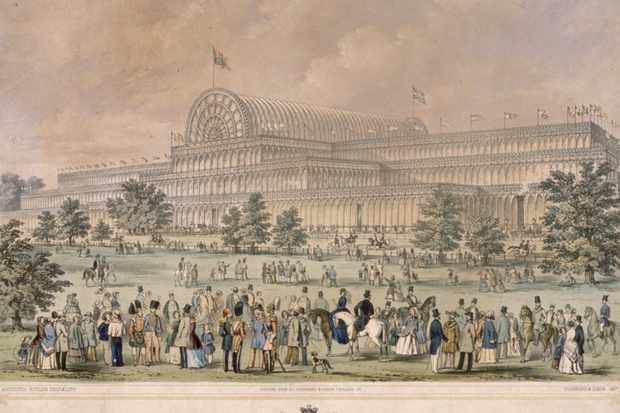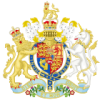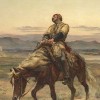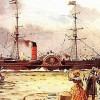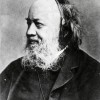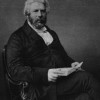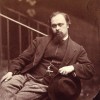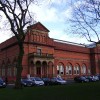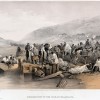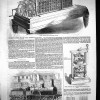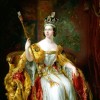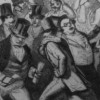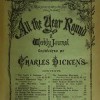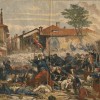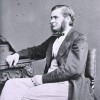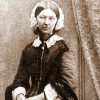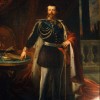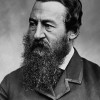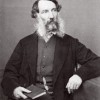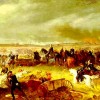Reading as Victorians Timeline
Created by Pearl Bauer on Wed, 09/15/2021 - 22:43
Part of Group:
These are timeline events that occured around the time our Victorian literary texts were being read and discussed.
Timeline
Chronological table
| Date | Event | Created by | Associated Places | |
|---|---|---|---|---|
| 1851 |
Crystal Palace opens ArticlesJules Law, “The Victorian Stereoscope” Related ArticlesAnne Helmreich, "On the Opening of the Crystal Palace at Sydenham, 1854" |
David Rettenmaier | ||
| 16 Oct 1811 |
National Society for the Education of Poor Children foundedOn 16 October 1811, the National Society for the Education of Poor Children in the Principles of the Established Church (the Church of England) was founded to establish “National Schools.” According to their founders, poor children were to be taught to avoid vice and behave in an orderly manner within their station. To limit costs, the monitorial system was employed, by which more advanced pupils taught younger ones. Related ArticlesFlorence S. Boos, “The Education Act of 1870: Before and After” |
David Rettenmaier | ||
| 29 Aug 1833 |
Slavery Abolition Act
Articles |
David Rettenmaier | ||
| 29 Aug 1833 |
Factory Act
ArticlesRelated Articles |
David Rettenmaier | ||
| 1 Aug 1838 |
Molesworth ReportOn August 1838, the Molesworth Report was published, beginning the Dissolution of Convict Transportation to Australia. The report successfully built upon the rhetoric of the abolition movement by drawing connections between convicts and slaves, becoming one of the major deciding factors in eventually putting an end to the entire system of transportation. Articles |
David Rettenmaier | ||
| 1839 to 12 Oct 1842 |
Anglo-Afghan War
ArticlesAntoinette Burton, “On the First Anglo-Afghan War, 1839-42: Spectacle of Disaster” Related ArticlesZarena Aslami, “The Second Anglo-Afghan War, or The Return of the Uninvited” |
David Rettenmaier | ||
| 1 Jan 1840 |
Royal Mail steamships introduced on Atlantic routes
Articles |
David Rettenmaier | ||
| 10 Jan 1840 |
launch of UK Penny PostThe introduction of the Penny Post in 1840, the rapid expansion of the rail network in the UK, and the introduction of steamships on the transatlantic routes, created the optimum conditions for writing letters. Prior to 1840, the cost of inland postage was prohibitively expensive; it was calculated according to the number of sheets multiplied by the distance traveled. Additional charges were often levied and the burden of payment fell on the recipient, which did nothing to encourage frequent communication. The Penny Post Act drastically reduced the cost of an inland letter to a universal flat rate of just one penny for a half an ounce, and the introduction of the prepaid penny stamp removed the deterrent to accepting a letter. Articles |
David Rettenmaier | ||
| Jul 1842 |
Sanitary Condition of the Labouring Population
Related ArticlesPamela Gilbert, "On Cholera in Nineteenth-Century England" Barbara Leckie, “‘The Bitter Cry of Outcast London’ (1883): Print Exposé and Print Reprise” |
David Rettenmaier | ||
| Oct 1844 |
Vestiges of the Natural History of Creation
ArticlesJonathan Smith, “The Huxley-Wilberforce ‘Debate’ on Evolution, 30 June 1860″ Related ArticlesNancy Armstrong, “On Charles Darwin’s The Descent of Man, 24 February 1871″ Ian Duncan, “On Charles Darwin and the Voyage of the Beagle” Anna Henchman, “Charles Darwin’s Final Book on Earthworms, 1881” Martin Meisel, "On the Age of the Universe" Cannon Schmitt, “On the Publication of Charles Darwin’s On the Origin of Species, 1859″ Daniel Bivona, “On W. K. Clifford and ‘The Ethics of Belief,’ 11 April 1876″ |
David Rettenmaier | ||
| 21 Jul 1845 |
Protection of Works of Art Act
ArticlesAmy Woodson-Boulton, “The City Art Museum Movement and the Social Role of Art” |
David Rettenmaier | ||
| 1 Feb 1848 |
Tuscan uprising
To supporters of Italian independence, the short-lived uprising in Tuscany, leading to a new constitution as well as freedom of the press and of religious practice, seemed to be the first step to overthrowing foreign rulers ArticlesAlison Chapman, "On Il Risorgimento" ArticlesMarjorie Stone, “On the Post Office Espionage Scandal, 1844″ |
David Rettenmaier | ||
| 24 Feb 1848 |
Times reports on Paris revoltOn 24 February 24 1848, news of revolt in Paris is reported in the second edition of The Times, although the scale of the uprising is not immediately appreciated. This begins extensive coverage of events in France, with newspapers in Britain often publishing several editions in one day to keep up with the fast changing situation. ArticlesJo Briggs, “1848 and 1851: A Reconsideration of the Historical Narrative” |
David Rettenmaier | ||
| 31 Aug 1848 |
Public Health Act
ArticlesPamela Gilbert, "On Cholera in Nineteenth-Century England" Barbara Leckie, “‘The Bitter Cry of Outcast London’ (1883): Print Exposé and Print Reprise” |
David Rettenmaier | ||
| Sep 1848 |
Pre-Raphaelite Brotherhood founded
Related ArticlesElizabeth Helsinger, “Lyric Poetry and the Event of Poems, 1870″ Morna O’Neill, “On Walter Crane and the Aims of Decorative Art” Linda M. Shires, "On Color Theory, 1835: George Field’s Chromatography" |
David Rettenmaier |
|
|
| 1 Jan 1850 |
Salford Royal Museum and Public Library opens
Articles
|
David Rettenmaier | ||
| 1 May 1851 to 15 Oct 1851 |
Great Exhibition
The Great Exhibition of 1851 was an event in the history of: exhibitions; world’s fairs; consumerism; imperialism; architecture; collections; things; glass and material culture in general; visual culture; attention and inattention; distraction. Its ostensible purposes, as stated by the organizing commission and various promoters, most notably Prince Albert, were chiefly to celebrate the industry and ingeniousness of various world cultures, primarily the British, and to inform and educate the public about the achievement, workmanship, science and industry that produced the numerous and multifarious objects and technologies on display. Designed by Joseph Paxton, the Crystal Palace (pictured above) was a structure of iron and glass conceptually derived from greenhouses and railway stations, but also resembling the shopping arcades of Paris and London. The Great Exhibition of the Works of Industry of All Nations became a model for World’s Fairs, by which invited nations showcased the best in manufacturing, design, and art, well into the twentieth century. ArticlesAudrey Jaffe, "On the Great Exhibition" Related ArticlesAviva Briefel, "On the 1886 Colonial and Indian Exhibition" Anne Helmreich, “On the Opening of the Crystal Palace at Sydenham, 1854″ Anne Clendinning, “On The British Empire Exhibition, 1924-25″ Barbara Leckie, “Prince Albert’s Exhibition Model Dwellings” Carol Senf, “‘The Fiddler of the Reels’: Hardy’s Reflection on the Past” |
David Rettenmaier | ||
| 5 Sep 1852 |
Manchester Public Library opensON 5 Sept 1852, the Manchester Public Library opened. This was Britain’s first free public lending library, opened under the 1850 Public Libraries Act. Related ArticlesAmy Woodson-Boulton, “The City Art Museum Movement and the Social Role of Art” |
David Rettenmaier | ||
| 10 Aug 1854 |
Corrupt Practices Act
Related Articles
|
David Rettenmaier | ||
| 25 Oct 1854 |
Charge of the Light BrigadeOn 25 October 1854, British forces undertook the charge of the Light Brigade at the Battle of Balaklava. Image: Tinted lithograph showing the embarkation of sick persons at the harbor in Balaklava" (William Simpson, artist; Paul & Dominic Colnaghi & Co., publishers, 24 April 24 1855). This image is available from the United States Library of Congress's Prints and Photographs division under the digital ID ppmsca.05686. The image is in the public domain in the United States because its copyright has expired. No other engagement of the war has stuck so vividly in the popular consciousness, aided by Tennyson's poem of the same name, by far the best-remembered cultural product of the war. On the morning of October 25th, 1854, over six hundred British men rode the wrong way down a “valley of death” (so christened first by The Times and later by Tennyson) as enemy guns attacked from all sides. Not two hundred made it out alive. The charge resulted from a series of miscommunications between Lord Raglan, the Commander-in-Chief of the British Forces, and Lord Lucan, the Commander of the Cavalry. Both Tennyson’s poem and many other contemporary responses to the charge suggest that reactions to this event were deeply conflicted, expressing real bewilderment about how to integrate it into preexisting models of patriotic feeling. Moreover, a new form of heroism grew out of the bewildering experience of the Light Brigade’s defeat—and a new sense of a national identity that was based in part on this new heroism. ArticlesStefanie Markovits, "On the Crimean War and the Charge of the Light Brigade" |
David Rettenmaier | ||
| Jan 1855 |
Food and its AdulterationsArthur Hill Hassall, the senior analyst for the London The Lancet, published in 1855 a complete record of The Lancet articles that brought food adulteration before a wide public and eventually resulted in Parliamentary action: Food and its Adulterations. Comprising the Reports of the Analytic Sanitary commission of The Lancet for the years 1851 to 1854 inclusive; revised and extended: being records of the results of some thousands of original microscopical and chemical analyses of the solids and fluids consumed by all classes of the public. (Exact month of publication unknown; if you have information about the correct date, please email [email protected] with this information.) Articles |
David Rettenmaier | ||
| May 1855 |
Scheutz’s Difference Engine
ArticlesRoger Whitson, “The Difference Engine: 1832, 1855, 1876, 1991, 2002, 2008″ |
David Rettenmaier | ||
| 15 Jun 1855 |
Stamp Act
Related ArticlesElaine Hadley, “On Opinion Politics and the Ballot Act of 1872″ |
David Rettenmaier | ||
| 30 Jul 1855 |
Public Libraries Act
Articles
|
David Rettenmaier | ||
| 14 Mar 1856 |
Petition for Reform of Married Women’s Property LawOn 14 March 1856, presentation of the Petition for Reform of the Married Women’s Property Law, 1856. The petition began the joint effort by lawmakers and public women to grant married women control of their own wealth. ArticlesJill Rappoport, “Wives and Sons: Coverture, Primogeniture, and Married Women’s Property” Related ArticlesRachel Ablow, “‘One Flesh,’ One Person, and the 1870 Married Women’s Property Act” Anne D. Wallace, “On the Deceased Wife’s Sister Controversy, 1835-1907″ |
David Rettenmaier | ||
| 10 May 1857 to 20 Jun 1858 |
Indian Uprising
ArticlesPriti Joshi, “1857; or, Can the Indian ‘Mutiny’ Be Fixed?” Related ArticlesJulie Codell, “On the Delhi Coronation Durbars, 1877, 1903, 1911″ |
David Rettenmaier | ||
| 22 Jun 1857 |
Victoria and Albert Museum opened
Related ArticlesCarol Senf, “‘The Fiddler of the Reels’: Hardy’s Reflection on the Past” |
David Rettenmaier | ||
| 28 Aug 1857 |
Matrimonial Causes Act of 1857
ArticlesKelly Hager, “Chipping Away at Coverture: The Matrimonial Causes Act of 1857″ Related ArticlesRachel Ablow, “‘One Flesh,’ One Person, and the 1870 Married Women’s Property Act” Jill Rappoport, “Wives and Sons: Coverture, Primogeniture, and Married Women’s Property” |
David Rettenmaier | ||
| 27 Oct 1857 |
Start of the 1857 financial crisis in England
ArticlesLynn Shakinovsky, “The 1857 Financial Crisis and the Suspension of the 1844 Bank Act” Related ArticlesCrosby, Mark. “The Bank Restriction Act (1797) and Banknote Forgery” |
David Rettenmaier | ||
| 24 Dec 1857 |
End of the 1857 financial crisis in England
ArticlesLynn Shakinovsky, “The 1857 Financial Crisis and the Suspension of the 1844 Bank Act” Related ArticlesCrosby, Mark. “The Bank Restriction Act (1797) and Banknote Forgery” |
David Rettenmaier | ||
| 30 Apr 1859 |
All the Year Round founded
All the Year Round was the first magazine with Dickens as proprietor-editor, and home to first important sensation novel, Woman in White. Articles |
David Rettenmaier | ||
| 4 Jun 1859 |
Battle of Magenta
ArticlesAlison Chapman, "On Il Risorgimento" Related ArticlesMarjorie Stone, “On the Post Office Espionage Scandal, 1844″ |
David Rettenmaier | ||
| 24 Nov 1859 |
On the Origin of Species
ArticlesNancy Armstrong, “On Charles Darwin’s The Descent of Man, 24 February 1871″ Ian Duncan, “On Charles Darwin and the Voyage of the Beagle” Anna Henchman, “Charles Darwin’s Final Book on Earthworms, 1881” Martin Meisel, "On the Age of the Universe" Cannon Schmitt, “On the Publication of Charles Darwin’s On the Origin of Species, 1859″ Related ArticlesDaniel Bivona, “On W. K. Clifford and ‘The Ethics of Belief,’ 11 April 1876″ |
David Rettenmaier | ||
| 30 Jun 1860 |
Huxley-Wilberforce “Debate” on Evolution
ArticlesJonathan Smith, “The Huxley-Wilberforce ‘Debate’ on Evolution, 30 June 1860″ Related ArticlesNancy Armstrong, “On Charles Darwin’s The Descent of Man, 24 February 1871″ Ian Duncan, “On Charles Darwin and the Voyage of the Beagle” Anna Henchman, “Charles Darwin’s Final Book on Earthworms, 1881” Martin Meisel, "On the Age of the Universe" Cannon Schmitt, “On the Publication of Charles Darwin’s On the Origin of Species, 1859″ Daniel Bivona, “On W. K. Clifford and ‘The Ethics of Belief,’ 11 April 1876″ |
David Rettenmaier | ||
| 9 Jul 1860 |
Nightingale Home and Training School for Nurses opened
ArticlesLara Kriegel, “On the Death—and Life—of Florence Nightingale, August 1910″ Related Articles |
David Rettenmaier | ||
| 1 Feb 1861 |
Italy is united
ArticlesAlison Chapman, "On Il Risorgimento" Related ArticlesMarjorie Stone, “On the Post Office Espionage Scandal, 1844″ |
David Rettenmaier | ||
| 1862 to 1865 |
Baker expedition to Lake Albert
Articles |
David Rettenmaier | ||
| 15 Aug 1862 |
Cage CrinolineAt the peak of the cage crinoline fad, a single issue of the London Evening Standard (15 August 1862) included a report of a young woman’s death caused by a crinoline fire and an advertisement touting the monarch-approved Thomson’s prize-winning “Crown” model. ArticlesRebecca N. Mitchell, “15 August 1862: The Rise and Fall of the Cage Crinoline” |
David Rettenmaier | ||
| 25 Aug 1862 |
Victoria Station openedOn 25 August 1862, London Victoria Station was opened, connecting London to the Kent coast. Related ArticlesPaul Fyfe, “On the Opening of the Liverpool and Manchester Railway, 1830″ Nancy Rose Marshall, “On William Powell Frith’s Railway Station, April 1862″ |
David Rettenmaier | ||
| 11 Oct 1865 |
Morant Bay Rebellion
Articles |
David Rettenmaier | ||
| Dec 1865 |
“Jamaica Committee”
Articles |
David Rettenmaier | ||
| 1866 to 187 |
Livingstone expedition to East Africa
ArticlesMatthew Rubery, "On Henry Morton Stanley’s Search for Dr. Livingstone, 1871-72" |
David Rettenmaier | ||
| 11 May 1866 |
Black FridayThe Collapse of the City of London's oldest bill-brokerage firm and discount company, Overend, Gurney, and Company initiates the financial panic of 1866, marking a change in perception of the banking industry and stimulating new economic theories during the 1860s. Articles |
David Rettenmaier | ||
| 14 Jun 1866 to 2 Aug 1866 |
Austro-Prussian War
ArticlesAlison Chapman, "On Il Risorgimento" Related ArticlesMarjorie Stone, “On the Post Office Espionage Scandal, 1844″ |
David Rettenmaier | ||
| Jun 1868 |
Edward John Eyre acquitted
Articles |
David Rettenmaier |

